Recently, there has been a lot of buzz about a college student (digital design major) in New Jersey named Amos Dudley who made his own braces for $60! Exciting as this is, I must point out that he used his school’s scanner, 3D printer and provided his own labor needed to make the invisible aligners, which doesn’t make the actual cost anywhere near $60. The real cost is over $100,000 for the software, equipment, supplies, and labor. However, the technology for making local aligners is getting better and less expensive. 10 years ago, I was certain that by 2016 traditional orthodontics (metal braces) would be replaced by a combination of clear ceramic braces and invisible aligners. At that time, there were many aligner companies competing to make this a reality. However, one aligner company sued the rest out of business. It has taken a decade and lots of private equity money to fight off current and future lawsuits for the recovery of competition to the clear aligner market. Competition leads to innovation and lower costs. The next 10 years will be very exciting for orthodontics and we plan to lead the way in Orlando.
Part 2 (Updated on July 23rd, 2018)
My last blog regarding Do-It-Yourself(DIY) orthodontics was nearly a year and a half ago, so I felt like an update to the topic was needed. Smile Direct Club currently is the most well-known DIY aligner product. Consumers (technically not patients as no doctor/patient relationship has been established) can visit one of there many scans centers (2 in Orlando) or have an impression kit sent to their home. In the past year a few other companies have begun to provide at home clear aligners including Snap Correct, Orthly and Candid. Here is a rundown on their pricing:
- Snap Correct $1849
- Smile Direct Club $1850
- *Align 9 $1899
- Candid $1995
- Orthly $1900-2600 (depending on severity)
DIY clear aligners can work in some situations, specifically if you have had previous orthodontic treatment and your bite has been corrected. If your problem stems from failure to wear a retainer then DIY might work for you. However, a thorough orthodontic evaluation is needed in order to determine if DIY will be successful. Remember that orthodontics is a process of many many course corrections throughout treatment in order to get a quality final result, with braces or aligners. All teeth in all people do not move alike! Some movements and techniques work the first time and sometimes you need a plan B, C, D, E, or F. Since you are not being evaluated by the doctor in person, it can be difficult or nearly impossible for the orthodontist treating your case from a computer monitor to make the necessary adjustments throughout treatment in order to be timely and achieve success. I hope that helps! Until next time, keep smiling!





